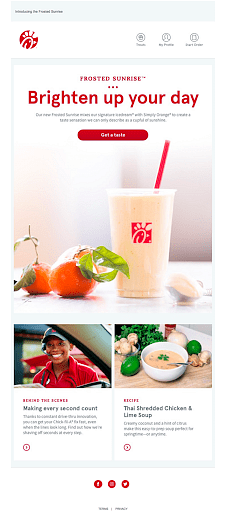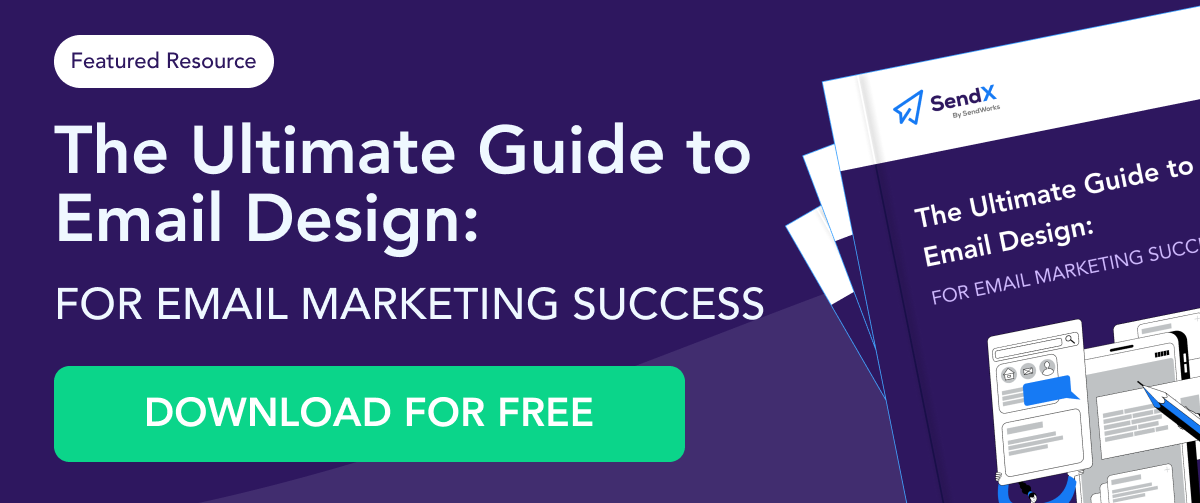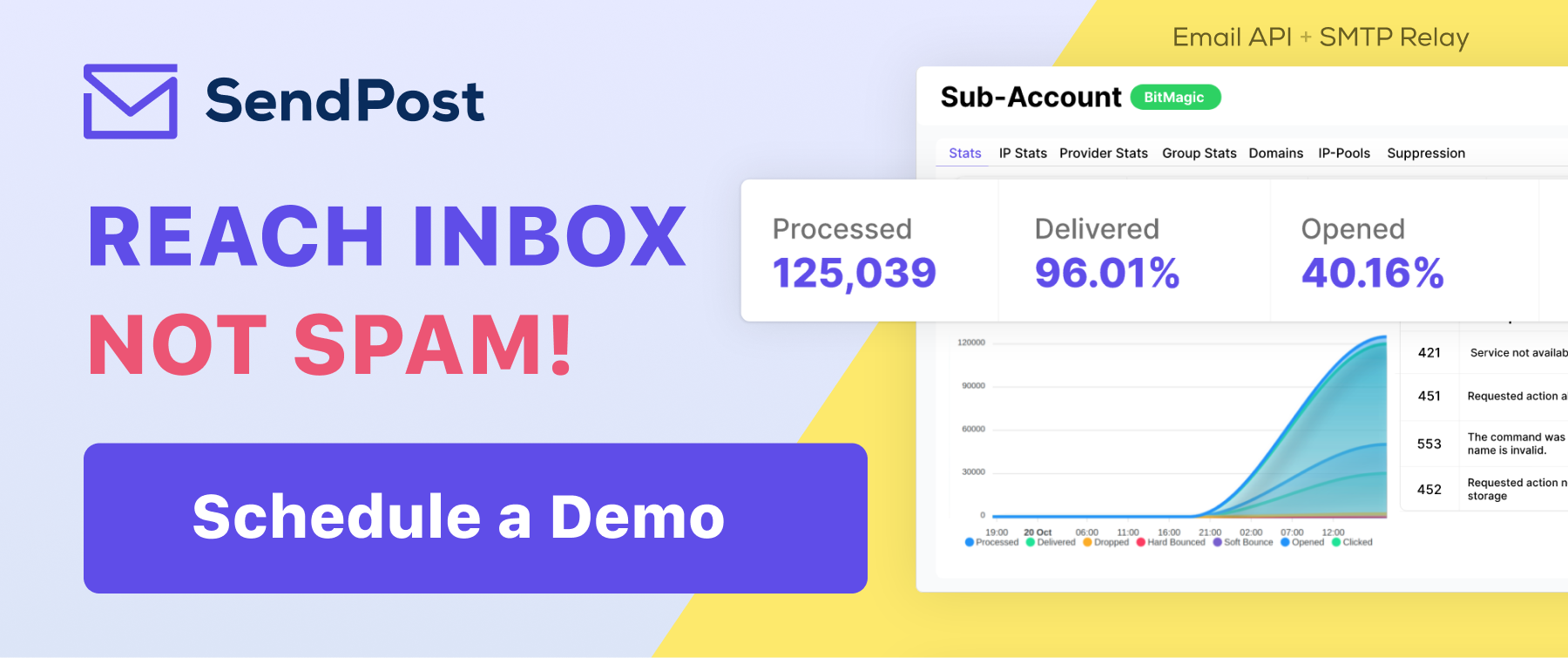
8 Strategies To Help You Increase Email Response Rates
If you have an email marketing list, there are several factors you need to optimize to have a significant positive return on investment. One of these factors is your email response rate. Your response rates would show you how effective your email marketing strategy is. In this article, we will be looking at strategies you can use to help you increase email response rates.
Table of Contents
What are Email Response Rates?
Email response rates are the number of email replies you get back after sending out an email campaign.
There are several factors that would determine your email response rates. Factors such as the type of email, your industry, the email platform you are using, your target audience, and the content of the email can affect your response rates.
On average, most marketers target a response rate of 10% for every email campaign sent out. Depending on the factors mentioned above, this number could be lower or higher by 5 - 10%.
Your overall response rate would help you determine how engaged your email list is with your content. Especially, if you have a large email list size, your email response rates become a lot more significant, and serve as an indicator of how well your email list is performing.
Using SendX Plus + is a great option to help you get the most out of a large email list.
How to Measure Email Response Rates
Your email response rate is determined by the number of emails that actually get delivered. You might send out 100000 emails in a single campaign and only have 95000 of them delivered to the recipient's inbox.
Your email response rate is not just measured by comparing the number of email replies to the number of emails sent. You would need to compare the number of emails delivered to the number of email responses.
Email response rate = (Emails Delivered ÷ Email Responses) × 100
To calculate the number of emails delivered, you would subtract the number of bounces from the number of emails sent.
How to Increase Email Response Rates
Get Your Timing Right
To increase the ROI from your email marketing campaigns and improve your response rates, the first step is to get your timing right. You need to figure out what time of the day you are most likely to get the highest amount of clicks.
When it comes to getting your email recipients to open and respond to your emails, you need to send them out at the right time.
There are several factors we are going to consider to improve your timing. First, we would look at the general email send time tips.
- Should you send emails in the day or at night? It is a best practice to send your email campaigns in the day than at night. Most people would be tired after work and might just want to relax. Not check their emails.
- Avoid Mondays. Most marketers would tell you to avoid sending out your email blasts on Monday. Not only would most people be catching up with the work, but they would also have their inbox packed full of emails. So to avoid your email getting lost in a sea of content, avoid Mondays.
- No weekends. On weekends, most people are running errands and relaxing with their families. Weekends have the lowest open rates than on weekdays. You should avoid sending out emails on weekends.
- The best days: According to research, Tuesdays and Thursdays are one of the best days to send out an email newsletter.
- Mid Week/Mid Day: Research suggests that the best time to send emails is in the middle of the week and also the middle of the day around 2 pm. This strategic timing has been found to positively impact email response time, ensuring higher chances of prompt and timely replies.
The second factor that determines the time you send emails is the recipient's device.
User habits change depending on the device they are using. For desktop users, the Mid Week and Mid Day send time rules are the appropriate standard. Mobile users, on the other hand, are active and make use of their phones late into the evening.
While mobile users are most likely to use their devices in the evening, a lot of email opens have in the latter part of the day.
To increase your open rates and response rates, you should determine which devices your recipients use in reading their emails. This would help you to determine your email outreach strategy.
Perfect Your Subject Line
You won't get a response to your emails if recipients are not opening your emails in the first place. Your subject line is the most important part of your email. You need to make it compelling enough for people to click through.
If you want to increase your open rates, click-through-rates or response rates, you would need to first perfect your subject lines.
To write a good subject line, these are some essential tips you should follow:
Urgency
Your subject line should create a sense of urgency in the reader. It should compel the recipient to want to click on the email.
Curiosity
You can increase your open rates when you pique the recipient's curiosity. When you capture their interest with your subject lines, they would want to click on the email to get more information. Remember that you shouldn't make your subject line too obscure that it would be regarded as spam.
Offers
By just adding "free offers" to your subject line, you can increase your email open rate significantly. People are more likely to open your email when they feel they would get a freebie or even a discount.
Relevance & Timeliness
When you send emails relevant to current trends or timely topics, you are most likely to get a click. This practice would also establish you as an authority in your industry.
Keep it short
If your email subject line is too long, they would get cut off. You should keep your email subject lines within 50 characters or less. Your email subject line should not contain any unnecessary detail.
Use a human sender
You should always set your sender name to be human. For example, Mike@companyname.com. People are more likely to open emails when it is from humans instead of automated bots.
Joanna Wiebe from Copy Hacker explains that "If the 'from' name doesn't sound like it's from someone you want to hear from, it doesn't matter what the subject line is."
Tip: Do not ever use the "noreply@company.com" email address. Not only is it not personalized, but people cannot also add you to the address book. This means that most of your emails might end up in the spam box.
Email Personalization
Email personalization is one of the best ways to get people to respond to your emails.
You might think that email personalization is all about adding the recipient's name to the email. There are many more ways you can personalize your emails other than just adding a name. Most readers already know of this strategy and might ignore it.
Use some of these strategies instead:
Use behavior triggered emails
Behavior triggered emails are automated emails sent to customers depending on how they interact with your product or service.
Automated emails are the most personalized email tactic you can use. They are perfect for welcoming readers, for re-engagement and upselling products or services. With this type of email, you can target subscribers based on their choices and behaviors.
Watch readers actions and interests
This is a more advanced form of personalization. You can personalize your email by recommending purchases or activities based on the past actions of the reader.
Amazon makes use of this strategy a lot.

Understanding your audience's preference and using this knowledge to send personalized emails should be part of your marketing mix. Rather than trying to reach all your audience with the same kind of emails/promotions, you should send them emails based on their interests and preference. This strategy would help you increase your email response rates.
Include Specific Call-to-Action (CTA)
Your CTA is at the heart of your entire email campaign. It is the factor that determines if you would achieve the goal of your campaign; in this case, increasing your email response rate.
If you aren't optimizing your email CTAs, you should start doing so now. These are some best practices to follow to optimize your email CTA.
Choose the right placements
Your CTA should be clearly visible to the reader. Whether the recipient is using a tablet, mobile phone or desktop, you should place your CTA button where they can clearly see it.
A good practice is placing the CTA button near to an eye-catching image. This would increase the chances of the reader seeing the CTA. For example, Ally places their CTA button "Learn more" next to a well-designed image. You would notice that the CTA button is in easy-to-read fonts that stand out from the rest of the image text on the screen.

Use action-focused words
Use action-oriented words that would drive a specific action from the recipient. Instead of using keywords like "Read More", use CTA buttons like " Get Exclusive Tips" and "Try For Free".
Use the right colors
Color plays a huge role in getting the recipient to take a particular action. Ashton Hauff explains, “In an ocean of content marketing, color can help your [marketing] stand out. It’s what gets your audience to see what you want them to see, feel what you want them to feel, and to do what you want them to do…"
You should use the right colors to draw the attention of the reader. Your CTA button should stand out from the rest of the text and background colors to encourage engagement.
For example, Chick Fil-A uses their signature red color to bring attention to their call-up button. The color red is also a great choice because red is known to be a hunger-driven color.

Here's a great resource to help you design eye-catchy emails.
Have A Clear Value Proposition
To increase your email response rates, you should show clearly the benefits (your value proposition) the recipients would get from interacting with your email.
A value proposition is a short statement that explains the benefits an individual gets from using a product or service. In the case of an email, it shows the reader the reasons why they should take action.
As an example, look at this email announcement of a new drag and drop feature.
The value proposition is concise and the first thing the reader sees is - "Create beautiful emails in minutes".
First, it tells the reader what the product offers (it creates emails) and then tells them the benefits they would gain from using the product to create emails (you can create the emails in minutes).
Your value proposition is very important. It is what directs the reader to take a particular action. If you do not clearly show your value proposition, you may have killed the chances of the reader clicking on your CTA button.
When writing a value proposition, there are three key factors it should meet:
- Clarity: Your value proposition should be written in a language that clearly shows what the product can do for them. Avoid making use of buzzwords or marketing jargon.
- Benefits: A great value proposition focuses on the benefits the reader would get from the product.
- Differentiation: Your value proposition must differentiate your products or services from competitors. You should outline specifically why your product is the right choice for them.
Be As Brief As Possible
Most readers have a short attention span, so it is important that you get straight to the point. If you cannot grab the attention of the readers in the first two lines of your email, you would end up losing them.
"Your email should not take more than 30 seconds to read. Anything longer that and they are most likely to lose interest" says Dimitry from Soar.
To optimize your chances of getting a response, express how you can solve their problems as quickly as possible.
Comply With CAN-SPAM Rules
You won't get any response or engagement on your emails if they are ending up in the spam box. To ensure that your emails get to the inbox of the reader, you need to follow CAN-SPAM rules.
CAN-SPAM (Controlling the Assault of Non-Solicited Pornography And Marketing) is a law that establishes the rules for commercial email and commercial messages, gives recipients the right to have a business stop emailing them, and outlines the penalties incurred for those who violate the law.
To comply, these are some of the rules to follow:
DOS
- Include a physical postal address in all your emails.
- Provide a clear unsubscribe button and you must comply with it within 10 business days.
- Use a "From", "To", and "Reply to" language that clearly shows who you are.
DON'TS
- Do not sell the email address of people on your subscribers list.
- You cannot ask a recipient to pay a fee, offer some other kind of information, or ask them to visit a single page on a website before they can unsubscribe.
- Do not use deceptive subject lines that are different from the content of your message.
Lastly, Proofread
This might seem like a no brainer, but you would be shocked that many people do not proofread their emails before hitting the send button. Ensure that your emails are free of spelling errors and poor grammar.
Grammar or spelling mistakes might make you look unprofessional and can cause a reduction in your email response rates. Your goal should be to create the best possible experience for the reader.
Conclusion
Email marketing is one of the most efficient tools to help you meet your business goals. It is an ideal platform to generate leads, increase sales, and drive revenue for your business. But before you can reap all these benefits, you need the recipients to engage with your emails.
A good way to measure this engagement is by the level of responses you receive. In this article, we have seen the steps to help increase your email response rates.
Especially, if you have a large email list size, your email response rates become a lot more significant and are a great indicator of how well your email list is performing. SendX is an ESP with great email deliverability and helps you get the most out of a large email list
Which of these steps would you start implementing in your marketing strategy?
FAQs
1) What are email response rates?
Email response rates are the number of email replies you get back after sending out an email campaign. Factors such as the type of email, your industry, the email platform you are using, your target audience, and the content of the email can affect your response rates.
2) What is a good email response rate for email marketing?
On an average, most marketers target a response rate of 10% for every email campaign sent out. Depending on the factors mentioned above, this number could be lower or higher by 5 - 10%.
3) How do I measure email response rates?
In order to measure the email response rates, you would need to compare the number of emails delivered to the number of email responses.
Email response rate = (Emails Delivered ÷ Email Responses) × 100
To calculate the number of emails delivered, you would subtract the number of bounces from the number of emails sent.
4) How to increase email response rates?
Here are a few important tips to increase your email response rates:
- Time your emails well, such as days of the week, hours of the day, devices used, etc.
- Create a compelling subject line.
- Personalize your emails.
- Include specific calls to action.
- Have a clear value proposition.
- Comply with CAN-SPAM rules.
- Ensure that it is proofread before sending.





